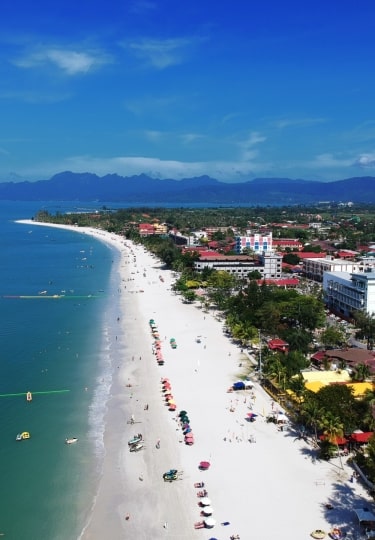For the most part, the best beaches in Malaysia have managed to escape the level of international hype of their counterparts in Thailand, Bali, or even Vietnam. Yet any traveler who pays them a visit is sure to succumb to their charms. With 878 islands and miles upon miles of coastline, Malaysia practically begs travelers to pack their bikinis and board shorts.
If you’re looking for a dreamy, beachy tropical escape, look no further than Langkawi. From its lush, jungle interior to its sandy shores, this island is the stuff of Robinson Crusoe fantasies.
Penang, meanwhile, is just as beloved for its phenomenal cuisine and beautifully preserved colonial and Peranakan architecture as it is for its sandy coastlines. Admire murals by renowned street artists and feast on hawker fare, then make your way to the ocean.
And should you find yourself longing to escape the fast-paced bustle of Kuala Lumpur, the beach is never too far.
Tuba Island, near Langkawi
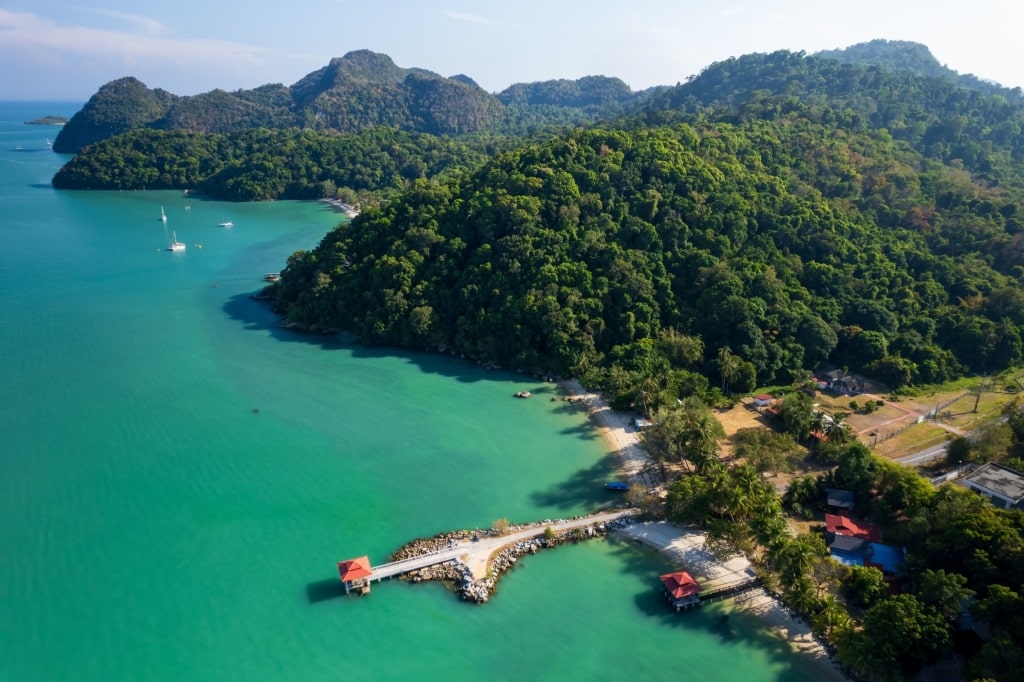
Tuba Island, near Langkawi
Surrounded by the turquoise waters of the Andaman Sea, Langkawi is a stunning Asian island blessed with an abundance of beautiful beaches. Curiously though, to get to one of the best beaches in the area, you’ll actually have to leave the island—but only just.
It’s important to remember that the name Langkawi also refers to an archipelago of 99 islands. And while you could easily spend your whole time on the largest island, it’s worth visiting some of its smaller siblings.
While Langkawi itself has boomed into the biggest resort destination in Malaysia, nearby Pulau Tuba—or “Tuba Island”—remains blissfully sleepy. A 15- to 20-minute boat ride from the main island is enough to whisk you to this verdant speck of land.
To this day, the island is home to little more development than a few fishing villages. There’s a lovely beach area to walk along towards the northern end of the island, making this an ideal afternoon getaway.
Morib Beach
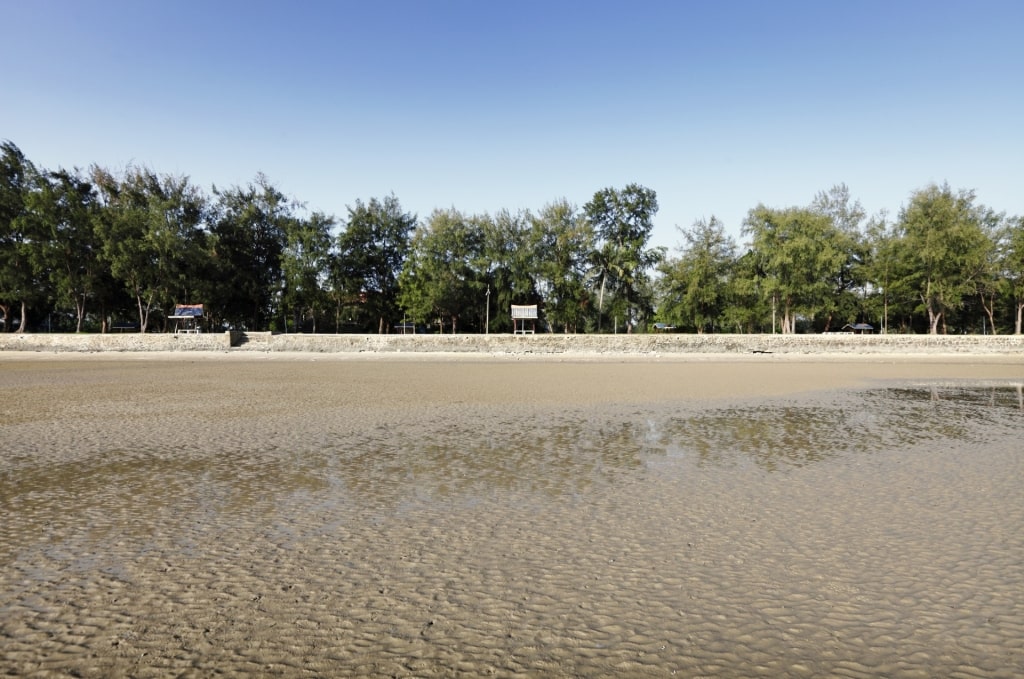
Morib Beach
Situated a short drive from downtown Kuala Lumpur, Morib Beach is often the weekend escape of choice for city-dwellers. There are a few different ways for travelers to reach this coastal oasis.
Although both buses and trains are available for the journey, by far the fastest and best option is simply to hire a local taxi. Drivers will get you from the shadow of the Petronas Towers to the beach in a little over an hour, depending on traffic.
Once there, the palm-fringed beach feels like another world. History lovers will find much to explore in the area, which has the ruins of a number of old government buildings.
Read: Best Things to Do in Kuala Lumpur
Blue Lagoon, Port Dickson
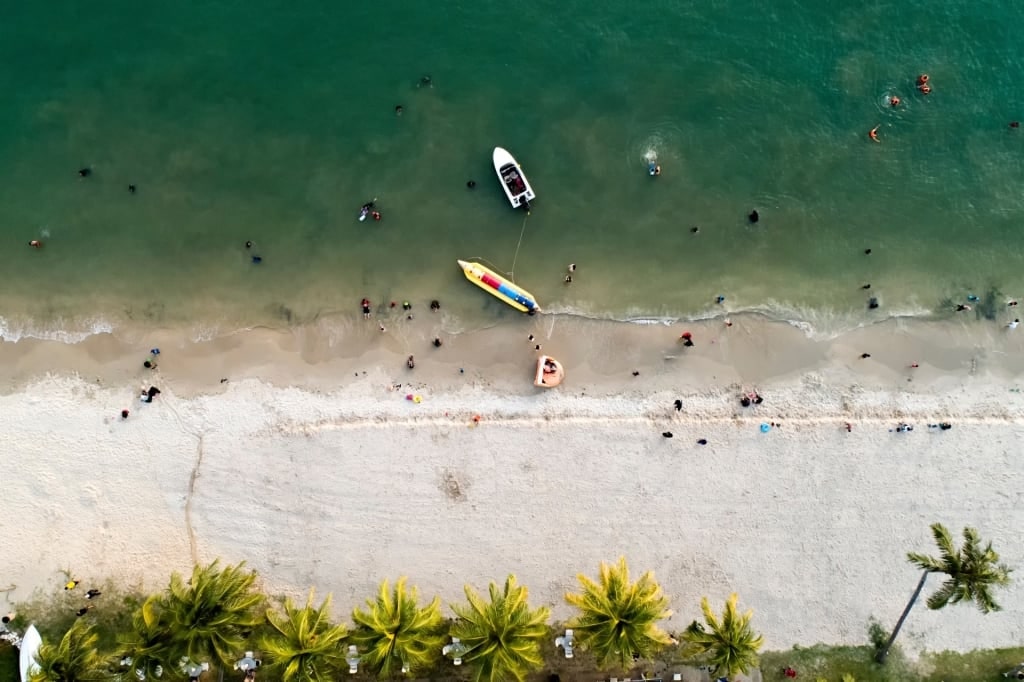
Blue Lagoon, Port Dickson
Tanjung Biru, or the “Blue Lagoon”, near Port Dickson, is another beach conveniently located within reach of the Malaysian capital. Although trains, trams, and buses can all make the journey, for travelers with limited time, a local taxi is the way to go. Within just over an hour, you can find yourself on a sheltered bay.
Tanjung Tuan Forest Reserve is nearby, which means this area is a great spot for birders. Dense jungle foliage borders the bay and extends for miles.
As its name implies, the water here is a particularly brilliant shade of aquamarine. The sandy crescent here is on the smaller side, but the views in all directions are spectacular. The water here is calm enough for swimming, sea kayaking, paddleboarding, and other watersports.
Pantai Saujana, Port Dickson
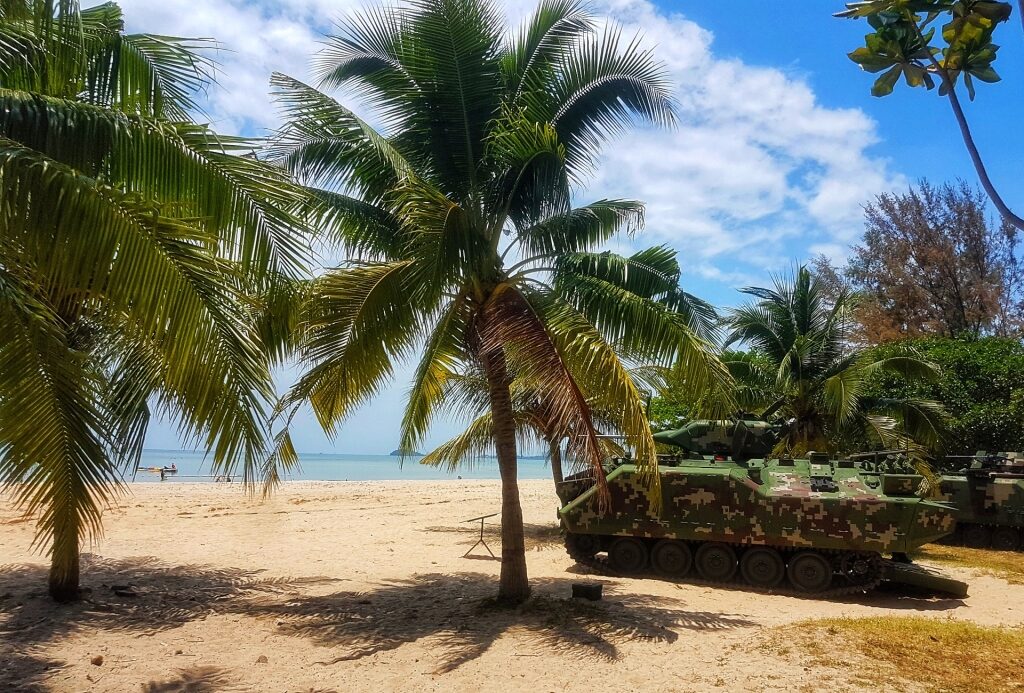
Pantai Saujana, Port Dickson
Not far from the Blue Lagoon lies this broad strip of coastline that’s perfect for families. Unlike some of Malaysia’s less trammeled shores, Pantai Saujana comes equipped with everything. There are showers and well-maintained public restrooms onsite, plus gazebos and ample shade during the tropical heat of the afternoon.
Should you find yourself feeling peckish, look for the small cluster of hawkers near the paved walkway. There’s also space for an impromptu seaside picnic, if you’ve opted to bring your own snacks. By far one of the best ways to spend an afternoon is to purchase one of the colorful kites sold by local vendors and watch it soar up in the sky.
Pantai Cenang
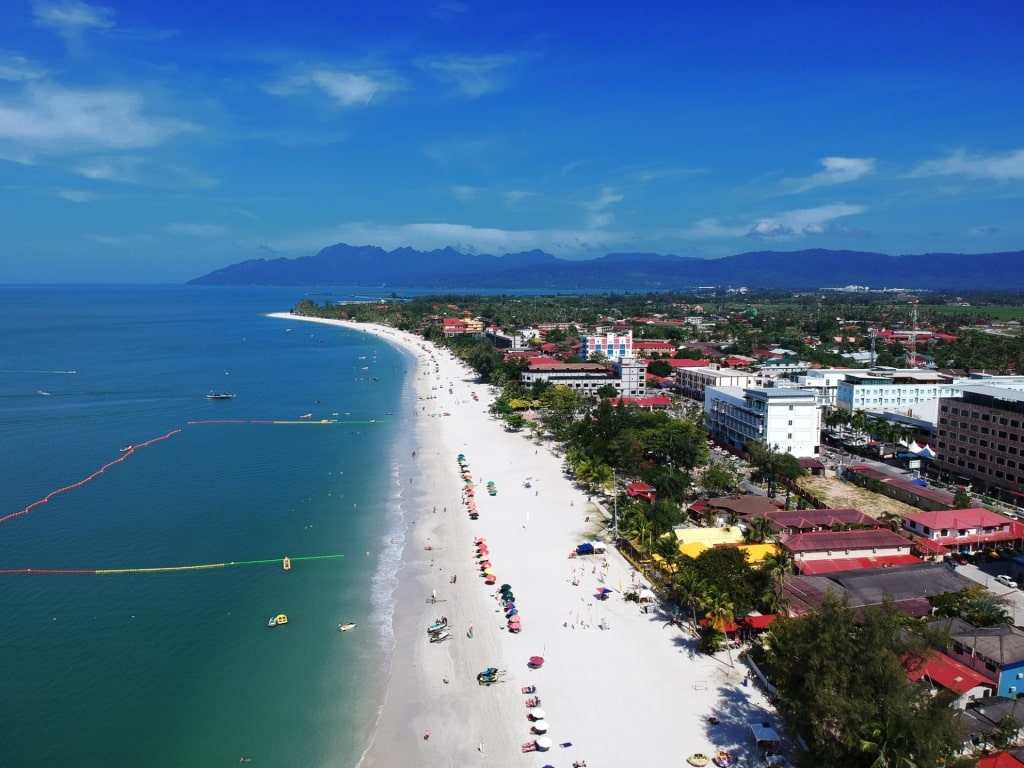
Pantai Cenang
It’s easy to see why this is the most popular beach on Langkawi. Over a mile long, Pantai Cenang is an absolute stunner, complete with pearl-white sands, azure waves, and coconut palms. Travelers seeking tranquility may want to look elsewhere, since the strip surrounding the beach is fairly heavily developed.
Still, if you’re looking for a postcard-perfect beach with lots to do, this is it. The water here is warm and calm enough for swimming. Parents in particular should keep a watchful eye out for jellyfish, but the beach is generally safe for a dip. Multiple watersport operators make it a breeze to hop on a jet-ski, paddleboard, or sea kayak here.
Read: Best Things to Do in Langkawi
Tanjung Rhu Beach
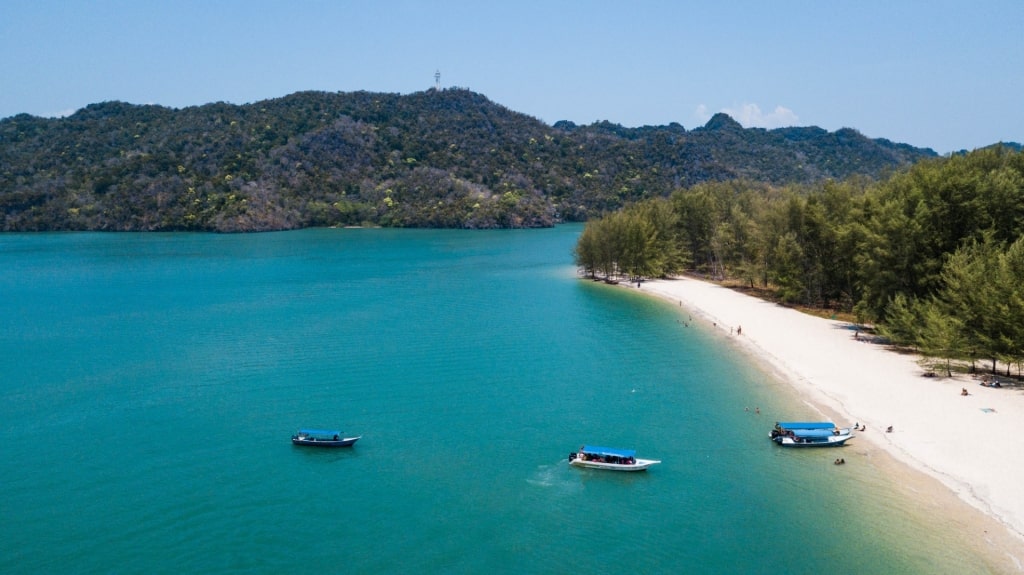
Tanjung Rhu Beach
It doesn’t get much more idyllic than this glittering expanse of sand on Langkawi. The Andaman Sea here is an alluring vivid shade of blue and the sand is almost blindingly white.
Tanjung Rhu Beach rests on the northeastern edge of the island. Its sheltered waters are clear enough to see straight to the bottom and peaceful enough to swim in all day long. Interestingly, the beach is named for the beautiful casuarina trees that can be seen in all directions here.
Although a section of the beach is private, more than a quarter-mile is free and open to the public. Note that there are no public toilets or showers, but what the beach lacks in facilities, it more than makes up for in natural splendor.
Jungle-draped limestone karsts rise majestically from the waters here. When the tide is low, wander along the natural landbridge out to nearby the small island of Pulau Chabang.
Pasir Tengkorak Beach
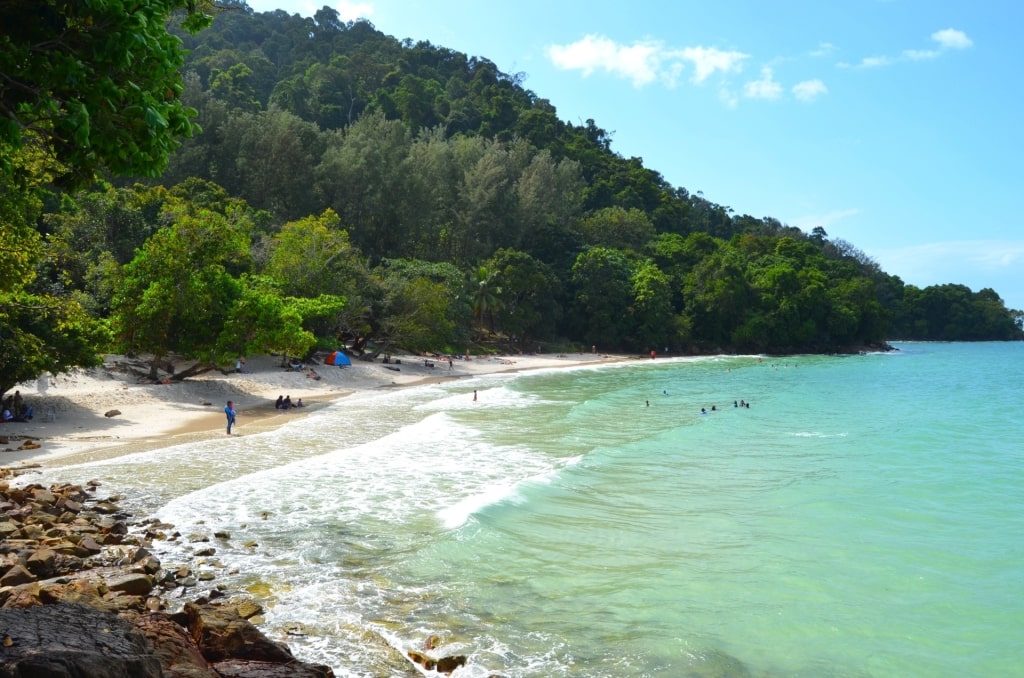
Pasir Tengkorak Beach
Don’t let this beach’s slightly ominous name deter you. Pasir Tengkorak Beach on Langkawi is often referred to as “Sandy Skull Beach,” although no one knows exactly why. Certainly, no grisly remains have been found here in living memory.
But more than a few locals have speculated that prisoners might have once swam to this shore from Ko Tarutao, a nearby Thai prison island. Other macabre stories abound. Pirates once sailed the Strait of Malacca. It’s always possible that a marauding ship full of ill-gotten cargo was wrecked and its crew washed ashore.
Nowadays, however, such things are the stuff of tall tales and distant memories. Pasir Tengkorak Beach, one of the best beaches in Malaysia, is an especially picturesque spot, replete with picnic tables and showers. The sugar-white sands and cerulean waters look plucked from an Instagram photo. The emerald vegetation of Pasir Tengkorak forest borders the beach on all sides.
Black Sand Beach
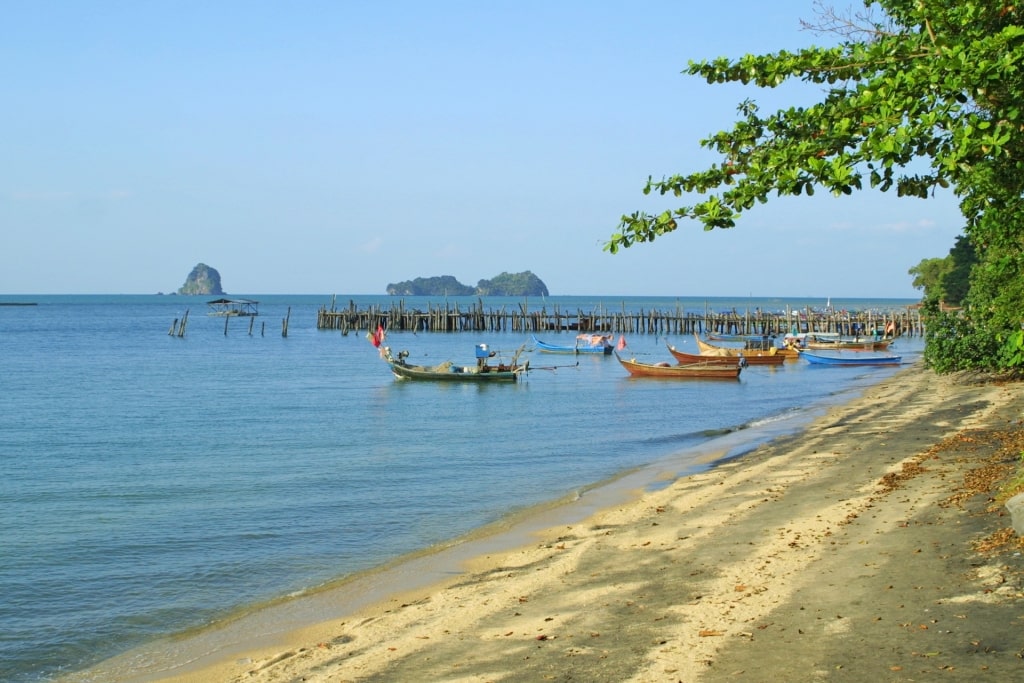
Black Sand Beach
True to its name, this beach on Langkawi’s northern coastline is strewn with volcanic sand. In reality, black-sand beaches are more of a dusty charcoal hue than obsidian.
Still, they make for a striking visual contrast to their more common snow-white counterparts. This particular one is marbled with honey-colored sand, making it especially beautiful when the sunlight catches it.
One curious fact about Pantai Pasir Hitam—the beach’s Malay name—is that no one is quite sure how the black sand got there. While it’s far from the only black beach in Southeast Asia—Bali is home to several—it remains the only one on this particular island.
Some geologists have attributed it to minerals from Mount Raya, but the evidence is inconclusive. As a result, the beach has a slight air of mystery about it.
Tanjung Bungah Beach
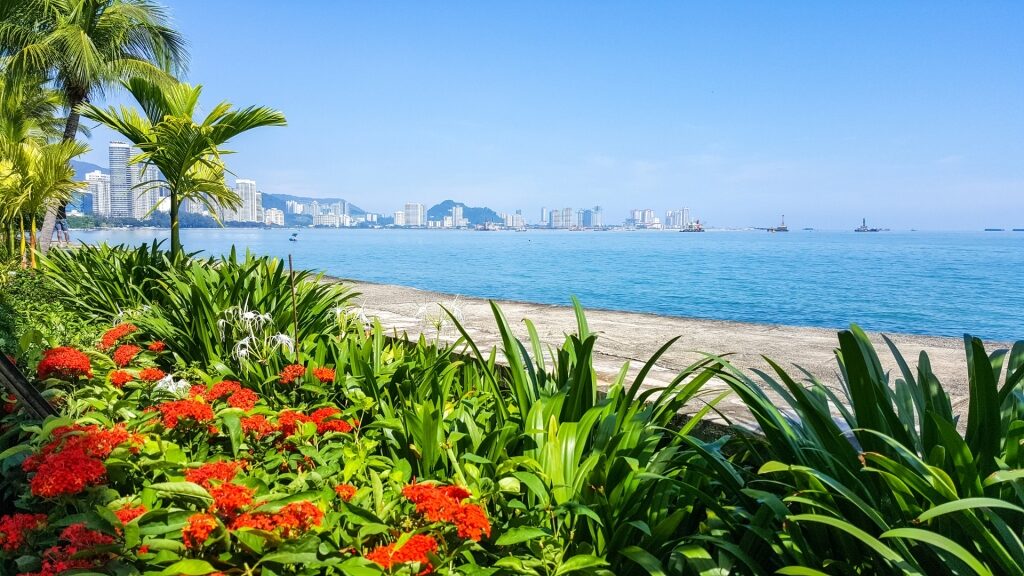
Tanjung Bungah Beach
Situated an easy half-hour drive from downtown George Town, the suburb of Tanjung Bungah makes for a lovely afternoon detour. A golden, sandy beach hugs the edge of the town. The water here isn’t the clearest, but it’s shallow and safe for all to wade in.
In the not too distant past, this area was a quiet fishing village. Today, the vibe is decidedly livelier, thanks to a growing level of development and highrises along the waterfront. While it doesn’t quite boast the jewel-box historical architecture of George Town’s UNESCO-protected city century, it still has plenty of charm.
Aside from the beach itself, one of the best reasons to visit this area is the Tanjung Bungah Market. From early morning until late at night, this covered hawker center serves some of the best food on the island.
Locals in Penang are fiercely proud of their cuisine—and with very good reason. The diverse local specialties encompass foods from the Indian and Chinese diaspora communities, as well as the Peranakans, also known as Baba-Nyonya. Many are on display and in fine form here.
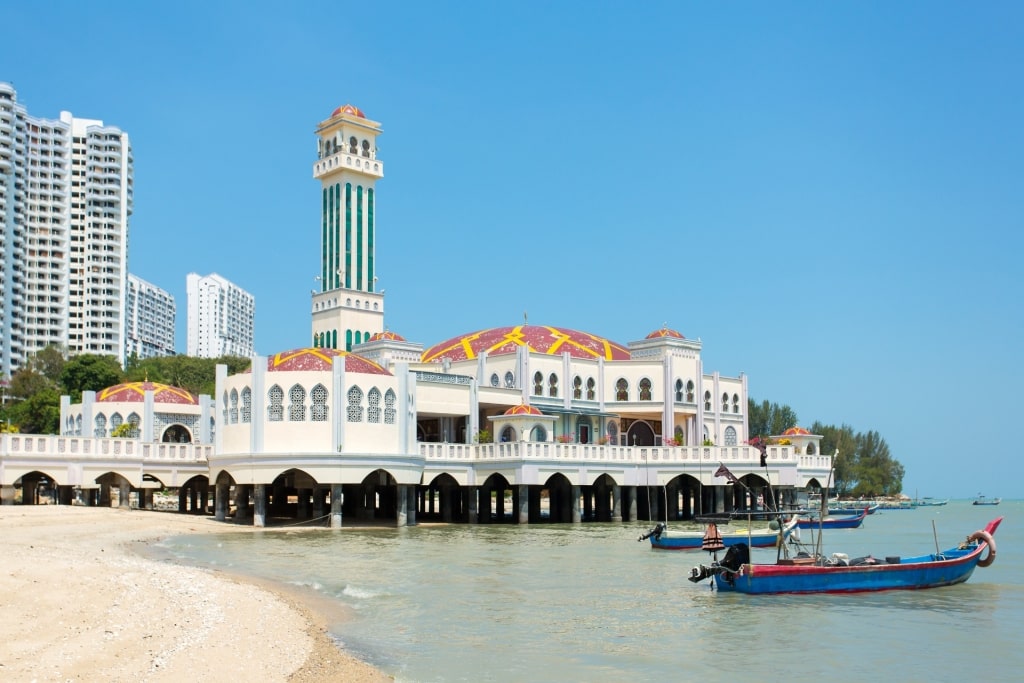
Tanjung Bungah Floating Mosque
After strolling along the beach and stopping for lunch at the market, pay a visit to the remarkable Tanjung Bungah Floating Mosque. Built in 1985, the alabaster-hued structure rests on steel pillars that extend into the sea. When the tide is high, it appears to bob suspended on the water’s mirror-smooth surface.
Teluk Bahang Beach
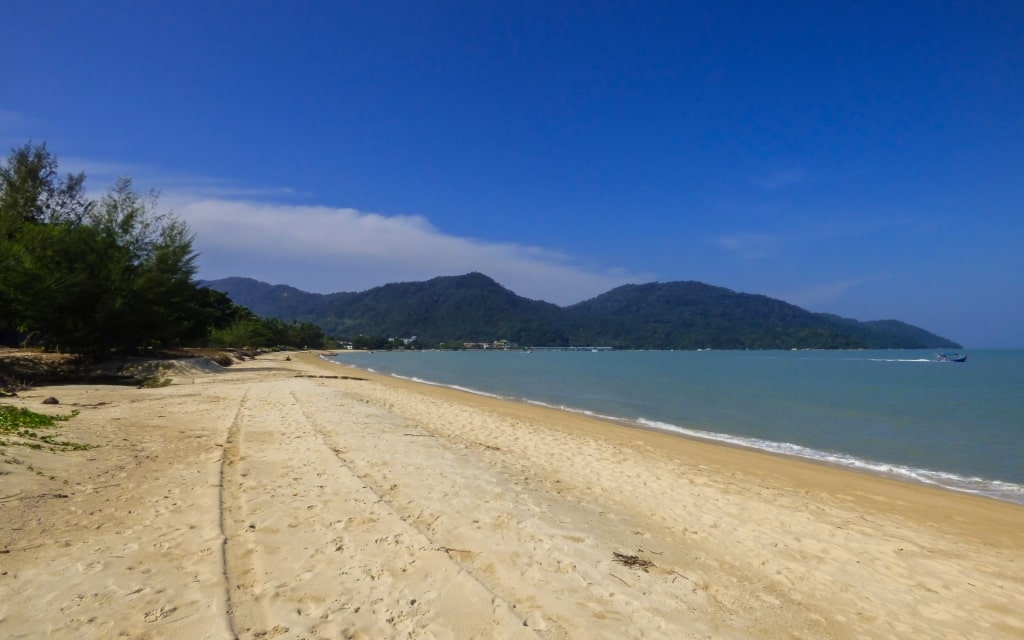
Teluk Bahang Beach
Sometimes known as the Bay of Embers, this sandy stretch on the western side of Penang gets lovely light in the late afternoon. The beach is roughly a 30-minute drive from George Town and local taxi drivers are generally happy to make the trip. Unfortunately, swimming is generally not advisable here, as jellyfish somewhat regularly drift by.
Nevertheless, the serene scenery makes this more than worth a visit. After strolling along the fine, soft sand, head over to the Entopia Penang Butterfly Farm. This educational center was founded in 1986 by an enthusiastic entomologist. Today, the center boasts more than 15,000 brilliantly hued butterflies.
The lush botanical garden is also home to fireflies and other kinds of insects. It’s also by far one of the most popular activities on the island to do with kids. Regular hands-on programming and talks with naturalists make this the best kind of learning experience.
Gertak Sanggul Beach
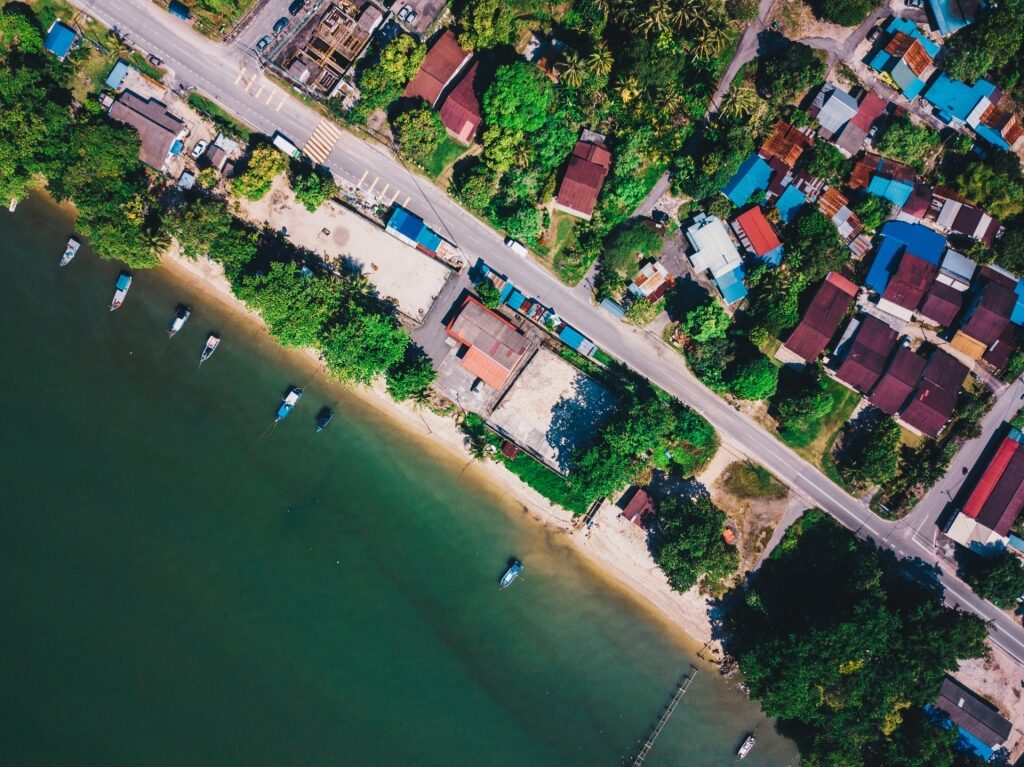
Gertak Sanggul Beach
If you’re looking for some of the freshest seafood on Penang, head straight for this palm-fringed shoreline on the southwestern coast. Gertak Sanggul Beach has long been home to a rustic fishing village. Every day before dawn, fishermen sail out into the Indian Ocean and return later that day with their catch.
Much of that haul ends up at the unpretentious eateries clustered near the shore. Gertak Sanggul Tua Pek Kong Seafood is a terrific place to sample all that piscine bounty. As an added bonus, it has a wonderful view of the water from its outdoor dining area. After a long lunch, stroll right back down to the sand.
Monkey Beach
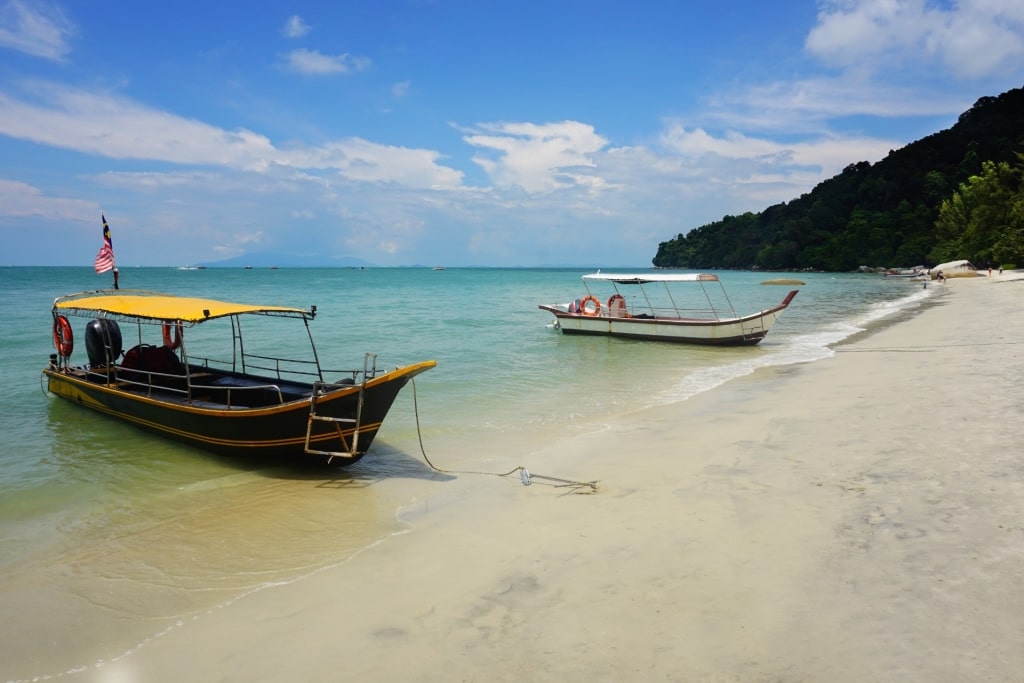
Monkey Beach
Although its official name is Teluk Duyung, just about everyone knows this spot in Penang National Park as “Monkey Beach.” True to its nickname, this space is indeed home to roving troops of playful simians.
Note that while the monkeys in question may be cute—and make for great pictures—they’re definitely not friendly enough to pet. Be sure to keep any snacks you might be carrying in tightly sealed packages and avoid feeding the critters.
As long as you keep a respectful distance, these primates are unlikely to bother you or your travel companions. The half-mile beach itself is lovely and worth a little bit of a journey. Monkey Beach is one of Penang’s more remote stretches of coastline.
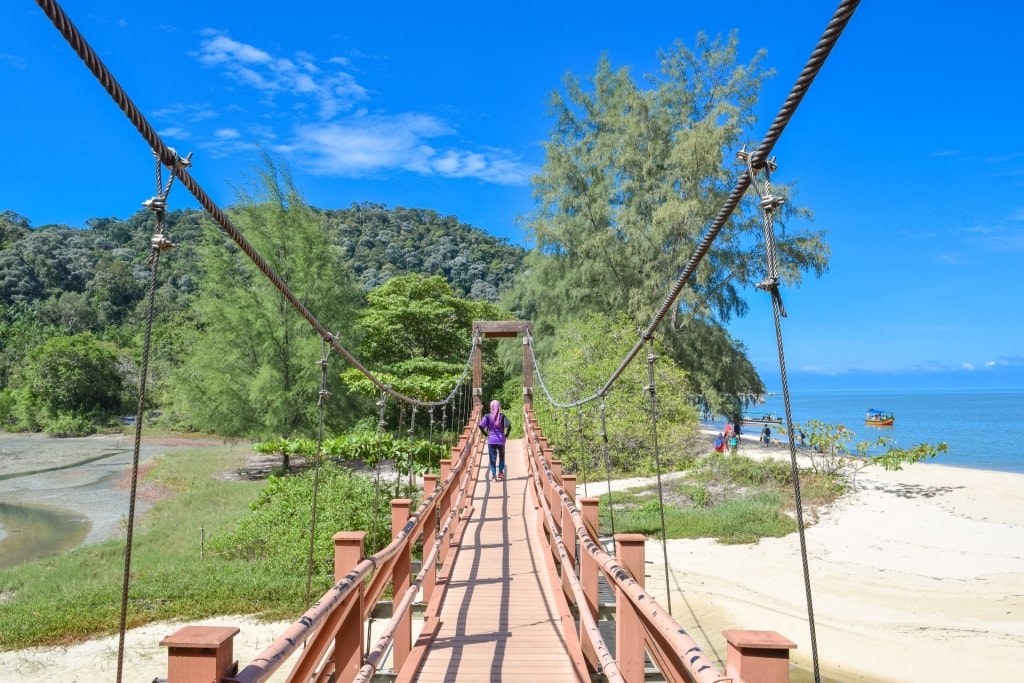
Penang National Park
Travelers can come here either by land or by sea. For the former, you’ll want to take a local 101 bus from George Town to the entrance of Penang National Park, then trek through the jungle to the beach. By water, the beach is accessible either by local boat services or jet-skis. While it’s a little bit of an adventure, it’s all easily accomplished within an afternoon.
Arguably the best way to keep the journey interesting is to hike to the beach one way, then hop a jet-ski back. Along the way, you’ll see some of the most spectacular nature that the island has to offer.
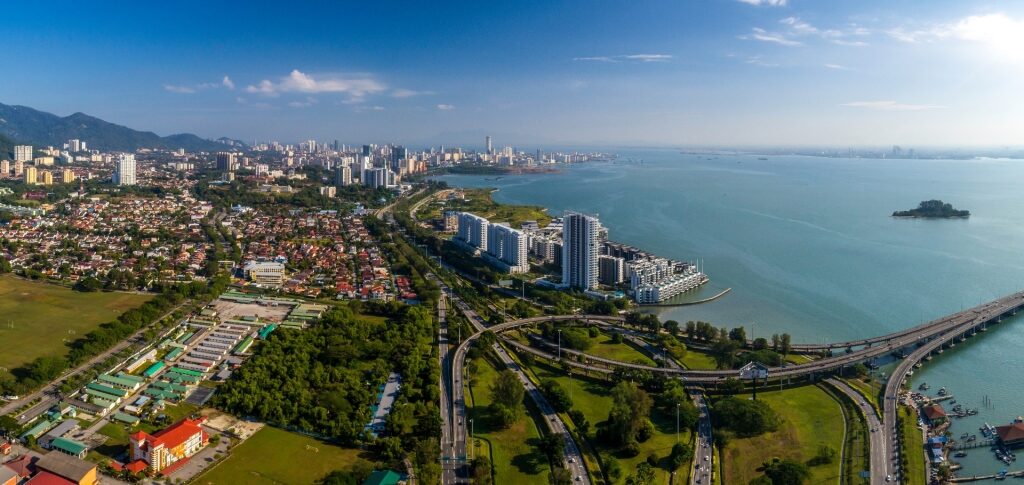
Penang
Explore Malaysia’s incredible beaches as part of an exciting cruise throughout southeast Asia. Browse our cruises to Malaysia and book your next adventure today.
